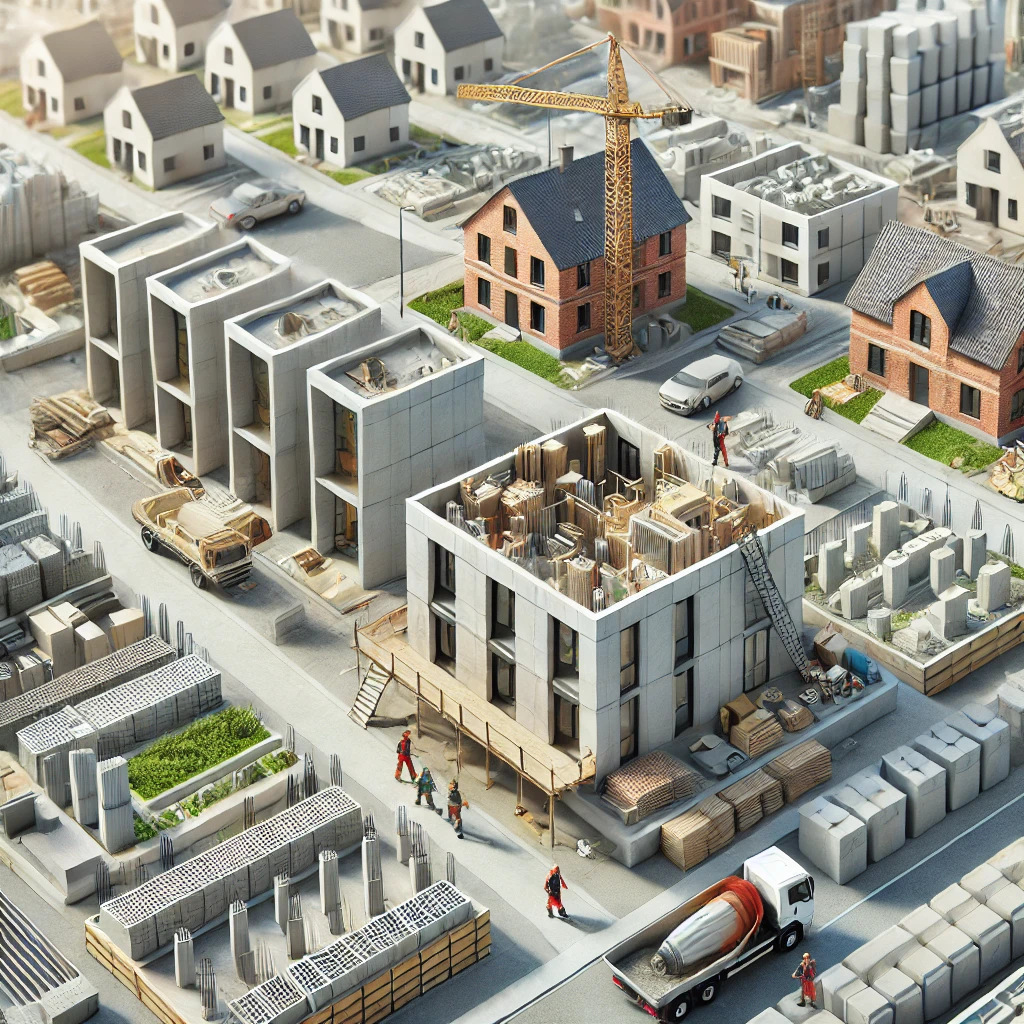
Precast concrete has long been associated with massive industrial and infrastructure projects, from bridges to skyscrapers. But here’s the reality: precast is not only ideal for large-scale construction—it’s also perfect for small and medium-sized projects. With its versatility, cost-effectiveness, and design flexibility, precast concrete has become a game-changer for residential homes, commercial buildings, and more.
In this comprehensive guide, we’ll explore the versatility of precast concrete and how it’s reshaping modern construction. Whether you’re building a cozy family home, a sleek office space, or a retail store, precast might just be the solution you didn’t know you needed.
What Is Precast Concrete?
Precast concrete involves manufacturing concrete components off-site in a controlled environment, then transporting them to the construction site for assembly. These components—ranging from panels to beams and walls—are customized to meet specific design and functional requirements. This method offers:
- Enhanced Precision: High-quality control ensures uniformity and consistency.
- Faster Timelines: Off-site production reduces construction delays.
- Cost Savings: Less labor and waste translate to lower overall costs.
Breaking Down the Misconception
The misconception that precast concrete is only for large-scale projects stems from its early use in infrastructure. But modern advancements have made precast a viable option for smaller projects. Here’s why:
- Design Versatility: Precast can be tailored to any aesthetic or functional need.
- Cost Efficiency: Faster installation means lower labor costs.
- Durability: Precast’s strength makes it a smart long-term investment.
The Versatility of Precast Concrete
1. Small Commercial Projects
Precast concrete has become a popular choice for retail stores, office buildings, and other commercial spaces. Its modular nature allows for rapid installation, reducing construction timelines and labor costs. Additionally, its durability minimizes long-term maintenance, offering significant lifecycle savings.
2. Residential Projects
Think precast doesn’t fit residential construction? Think again. Precast panels can:
- Improve thermal efficiency for lower energy bills.
- Offer customizable textures and finishes for unique designs.
- Integrate seamlessly with materials like wood or glass for modern aesthetics.
From single-family homes to modular housing, precast is paving the way for innovative residential designs.
3. Institutional Buildings
Schools, hospitals, and community centers benefit from precast concrete’s speed of construction and energy efficiency. Customization options ensure these buildings meet both functional and aesthetic needs while adhering to strict budgets and timelines.
Why Precast Works for Any Project
Key Benefits:
- Speed: Precast components arrive ready to install, saving valuable time.
- Customization: Choose from various shapes, textures, and finishes.
- Sustainability: Precast is eco-friendly, with recyclable materials and efficient manufacturing.
- Cost-Effectiveness: Reduced waste and faster timelines lead to significant savings.
Modular Construction and Precast
One of the most exciting applications of precast concrete is in modular construction. Precast modules are manufactured off-site and assembled like building blocks. This approach is ideal for:
- Hotels
- Small apartment complexes
- Educational facilities
Modular precast construction ensures faster assembly without compromising on quality or design flexibility.
Addressing Common Concerns
1. Lack of Customization
Contrary to popular belief, precast offers extensive design flexibility. It can be molded into complex shapes, textured to mimic stone or brick, and colored to match any aesthetic. From modern to traditional designs, precast adapts effortlessly.
2. Transportation Challenges
With proper planning and collaboration with local suppliers, transportation and logistics are streamlined. Precast’s modular nature often reduces the need for extensive on-site adjustments.
3. Upfront Costs
While initial costs may seem higher, the long-term savings in maintenance, energy efficiency, and reduced construction timelines far outweigh the investment.
Precast Concrete and Sustainability
In an era of green building, precast stands out for its eco-friendly advantages:
- Energy Efficiency: Insulated precast panels enhance thermal performance.
- Recyclability: Many precast plants recycle waste materials, reducing environmental impact.
- LEED Certification: Precast helps projects meet green building standards.
The Future of Precast in Small Projects
1. Residential Innovation: Precast is transforming urban housing with modular designs, offering sustainable and space-efficient solutions for growing cities.
2. Tech Advancements: Building Information Modeling (BIM) and 3D printing are enhancing precast’s precision and design capabilities, making it more accessible for small-scale projects.
3. Green Initiatives: As sustainability takes center stage, precast’s energy efficiency and recyclability position it as a leading material in eco-conscious construction.
Final Thoughts
Precast concrete is no longer confined to large infrastructure projects. Its versatility, cost-efficiency, and sustainability make it an ideal choice for projects of any size. Whether you’re constructing a family home, a boutique retail store, or a small office building, precast concrete delivers unmatched value and innovation.
By embracing precast, architects and builders can achieve faster timelines, unique designs, and long-term savings—proving that this material is as versatile as it is durable. The next time you’re planning a project, consider precast concrete as your go-to solution.
Know about How do Construction Estimating Services Improve Accuracy?